war

 Most wars end when one of the sides surrenders because they know they have lost the war. It would be strange for two enemies to simply walk away from a war. Nevertheless, in the year 585BC, the Medians were at war with the Lydians. When the king of Lydia refused to hand over the Scythians to Cyaxares, a war broke out between the two kingdoms. The war had been going on for five years. Things weren’t going well for either side. Neither side seemed to be able to get the upper hand in the war. Then, it all changed. Still, it didn’t change in the way you would expect.
Most wars end when one of the sides surrenders because they know they have lost the war. It would be strange for two enemies to simply walk away from a war. Nevertheless, in the year 585BC, the Medians were at war with the Lydians. When the king of Lydia refused to hand over the Scythians to Cyaxares, a war broke out between the two kingdoms. The war had been going on for five years. Things weren’t going well for either side. Neither side seemed to be able to get the upper hand in the war. Then, it all changed. Still, it didn’t change in the way you would expect.
Technically this battle was called the Battle of Halys, but it ended with the solar eclipse that Thales predicted. After that, it was called the Battle of the Eclipse. The solar eclipse so terrified the Medians and Lydians that they forgot about the vicious battle they were fighting  and fled the battlefield. It had to have been the fastest end to a war in history…before or after.
and fled the battlefield. It had to have been the fastest end to a war in history…before or after.
Modern astronomical research places the date of the battle on May 28th 585 BC. Other dates have been proposed with varied evidence, but May 28 is the most widely accepted date for the event. For these ancient people, a solar eclipse would have appeared to have been an omen from the gods. They didn’t know any better. Subsequently, they lay down their weapons and quickly ushered in a truce.
Whilt this eclipse wasn’t the first one to be recorded, it was the first to be accurately predicted. According to the Greek historian Herodotus, Thales of Milete had made the prediction that it would occur in the year that it did. 
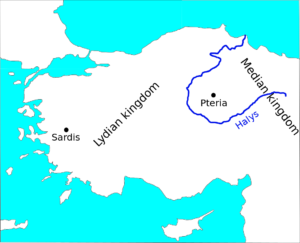 How he made the prediction is a mystery, and the answer continues to elude modern historians, because prediction of such events requires certain astronomical knowledge that they weren’t thought to have had back then. Nevertheless, he was probably the only one who was not particularly surprised about the sudden darkness on the battlefield. Everyone else was in a state of panic, and both sides decided that it was time to get the heck off the battlefield, before something really bad happened.
How he made the prediction is a mystery, and the answer continues to elude modern historians, because prediction of such events requires certain astronomical knowledge that they weren’t thought to have had back then. Nevertheless, he was probably the only one who was not particularly surprised about the sudden darkness on the battlefield. Everyone else was in a state of panic, and both sides decided that it was time to get the heck off the battlefield, before something really bad happened.

 My uncle, Larry Byer was just 20 months older than his little sister, my mom, Collene Spencer, who was followed 24 months later by their little brother, Wayne Byer. The three of them being as close as they were tended to try their mother, Hattie Byer’s patience at times. Boys being boys, and my mom being in the middle made for triple trouble. If you know anything about double trouble, I’m sure you can imagine what triple trouble was like. It was a good thing my grandmother was a tough lady…small but mighty, as they say. When her triple trouble kids got under her skin, she had no trouble handling their antics.
My uncle, Larry Byer was just 20 months older than his little sister, my mom, Collene Spencer, who was followed 24 months later by their little brother, Wayne Byer. The three of them being as close as they were tended to try their mother, Hattie Byer’s patience at times. Boys being boys, and my mom being in the middle made for triple trouble. If you know anything about double trouble, I’m sure you can imagine what triple trouble was like. It was a good thing my grandmother was a tough lady…small but mighty, as they say. When her triple trouble kids got under her skin, she had no trouble handling their antics.
After high school, Uncle Larry went into the Army. This was during the Korean War, but he was stationed in Germany. and he also spent some time in Austria. He said he wished he had been in Korea, but I’m not so sure he really would have. My guess is that he felt like he should have been there with so many others. After the war, he married my Aunt Jeanette, and together they had two children, Larry Wayne Byer and Tina Grosvenor. They also have six grandchildren, three granddaughters, including a set of twins, as well as three grandsons, and a number of great grandchildren. They were happily married for 55 years until Uncle Larry’s passing.
Uncle Larry worked for a number of years for Texaco Refinery, and when they closed down, he was not at 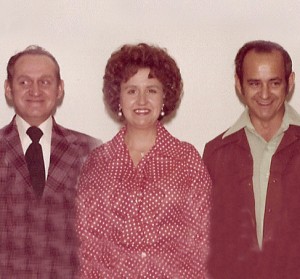
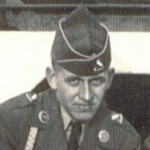 retirement age, so he took the transfer, and they moved to Louisianna. The split up their land here, outside of Caser and gave it to their kids. It must have been strange to move to a hot climate after living their whole lives in Wyoming, where we have more months of cold weather than we do warm weather. They remained in Louisianna until Uncle Larry was ready to retire, then came back to Wyoming where his lived out his life. Uncle Larry died of a heart attack on December 22, 2011, and we were very saddened to see him go. Today would have been Uncle Larry’s 90th birthday. Happy birthday in Heaven Uncle Larry. We love and miss you very much.
retirement age, so he took the transfer, and they moved to Louisianna. The split up their land here, outside of Caser and gave it to their kids. It must have been strange to move to a hot climate after living their whole lives in Wyoming, where we have more months of cold weather than we do warm weather. They remained in Louisianna until Uncle Larry was ready to retire, then came back to Wyoming where his lived out his life. Uncle Larry died of a heart attack on December 22, 2011, and we were very saddened to see him go. Today would have been Uncle Larry’s 90th birthday. Happy birthday in Heaven Uncle Larry. We love and miss you very much.

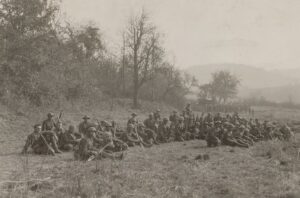 Today is a very important day. It is not about having a three-day weekend, a barbecue, picnic, or even a holiday camping trip. It’s not that these things are bad, or even wrong. It’s really just a matter of remembering and showing respect for those men and women who went to war and didn’t come home alive. Those men and women gave their all, their very lives to keep us and so many others around the world safe. They could have stayed home. There isn’t a draft anymore, although many were drafted, because in a war the likes of the world wars, and others, the men and women were dying so fast that the volunteers couldn’t keep up. So, they held a draft, and those men, because at that time women weren’t drafted, did their duty, and went to fight the war, many losing their lives in the process.
Today is a very important day. It is not about having a three-day weekend, a barbecue, picnic, or even a holiday camping trip. It’s not that these things are bad, or even wrong. It’s really just a matter of remembering and showing respect for those men and women who went to war and didn’t come home alive. Those men and women gave their all, their very lives to keep us and so many others around the world safe. They could have stayed home. There isn’t a draft anymore, although many were drafted, because in a war the likes of the world wars, and others, the men and women were dying so fast that the volunteers couldn’t keep up. So, they held a draft, and those men, because at that time women weren’t drafted, did their duty, and went to fight the war, many losing their lives in the process.
I happened to watch a movie the other night, called “The Lost Battalion.” It was a true event from World War I. It was called “The Lost Battalion” because of the heavy losses incurred by the nine companies of the US 77th Division of roughly 554 men, who were isolated by German forces during World War I after an American attack in the Argonne Forest in October 1918. Of the 554 men, roughly 197 were killed in action and approximately 150 missing or taken prisoner before the 194 remaining men were rescued. These men were not lost. The US Army knew where they were…pretty much, but they were lost, because it was expected that all would be lost, and that was almost the case. During the battle, the men had to leave the trenches and run, almost completely unprotected at the Germans entrenched on the other side of the hill. The battle was gruesome, and the movie was quite graphic. I’m sure many people would say that they shouldn’t have shown so much blood and mutilation, but if they “sugar coat” it, do we really understand how horrible war is?
The battalion was led by Major Charles W Whittlesey who survived the attack, but refused to be transported out ahead of his men, choosing instead to walk out with them. When the attack began in the Argonne, the 77th Division was under the belief that French forces were supporting their left flank and two American units including the 92nd Infantry Division were supporting their right. Within the 77th sector, some units, including Whittlesey’s 308th Infantry, were making significant headway, but unbeknownst to Whittlesey’s unit, the units to their left and right had been stalled, and actually retreated. Without this knowledge, the 77th Battalion moved beyond the rest of the Allied line and found themselves surrounded by German forces. As I watched the movie, my first thought was, why don’t they stay and fight from the trenches? Of course, I quickly realized that you can’t take the hill from the trench. These men had to dig deep within themselves, and leave the safety of the trench, knowing that they would most likely die right there, if the Allies were to have the victory. That is 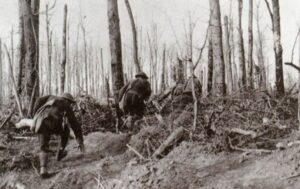
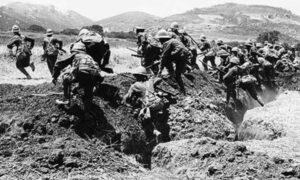 giving your all!! That is what Memorial Day is really all about…the men and women who charged the enemy, accepting their fate of almost certain death, to win the war and protect our freedoms. These men and so many like them are the heroes of this day…a fact that we must never forget. I thank every fallen soldier this day, because you gave your all…selflessly and willingly, and you will never be forgotten!!
giving your all!! That is what Memorial Day is really all about…the men and women who charged the enemy, accepting their fate of almost certain death, to win the war and protect our freedoms. These men and so many like them are the heroes of this day…a fact that we must never forget. I thank every fallen soldier this day, because you gave your all…selflessly and willingly, and you will never be forgotten!!
 When a soldier goes missing in action, it becomes an unthinkable phenomenon for their family. Really, when anyone goes missing and can’t be found, it is unthinkable for the family, but for a soldier, it’s particularly strange, because we knew where they were and what they were doing, and their disappearance isn’t really connected with anything like an abduction. I suppose it could be classified that way, but Missing In Action (MIA), is not classified as an abduction, but rather an act of war. Often, they were killed in action, and someone other than their company took care of their body. Of course, there is also the possibility that they were taken prisoner of war, but when the prisoners are all released, and our loved one is not among them, we have to face the possibility that something else happened. Every war has its list of Prisoners Of War (POW), and its list of MIAs, and these are people that we hope will never be forgotten, so that maybe someday the truth about what happened can be found out. If they are forgotten, then it is a very real possibility that they will never be found.
When a soldier goes missing in action, it becomes an unthinkable phenomenon for their family. Really, when anyone goes missing and can’t be found, it is unthinkable for the family, but for a soldier, it’s particularly strange, because we knew where they were and what they were doing, and their disappearance isn’t really connected with anything like an abduction. I suppose it could be classified that way, but Missing In Action (MIA), is not classified as an abduction, but rather an act of war. Often, they were killed in action, and someone other than their company took care of their body. Of course, there is also the possibility that they were taken prisoner of war, but when the prisoners are all released, and our loved one is not among them, we have to face the possibility that something else happened. Every war has its list of Prisoners Of War (POW), and its list of MIAs, and these are people that we hope will never be forgotten, so that maybe someday the truth about what happened can be found out. If they are forgotten, then it is a very real possibility that they will never be found.
In every war, there are kind people who will bury the dead of the enemy right along with their own dead, but 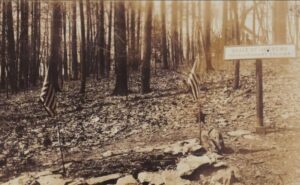 often they can’t read the names, so the dead are in an unmarked grave, possibly with their dog tags as the only definitive proof that the remains belong to that soldier. Some of those kind people have remembered where they buried the soldiers, and kept track of the proof of identity, so that maybe, somewhere down the road, they could reunite the soldier with his family…and some of those people have been returned to their families in recent years. The stories, when that happens, are so heart-warming. It reminds us once again, that there is good in this world, even if it’s harder to find these days.
often they can’t read the names, so the dead are in an unmarked grave, possibly with their dog tags as the only definitive proof that the remains belong to that soldier. Some of those kind people have remembered where they buried the soldiers, and kept track of the proof of identity, so that maybe, somewhere down the road, they could reunite the soldier with his family…and some of those people have been returned to their families in recent years. The stories, when that happens, are so heart-warming. It reminds us once again, that there is good in this world, even if it’s harder to find these days.
Of course, it is my opinion that no matter what, God knows where these lost ones are, and that someday people will be reunited with lost loved ones, either here on Earth, or later, in Heaven. That is something I have to believe when I think of anyone who has a lost loved one out there. I personally do not have a lost loved one out there…at least no one I knew personally. I have a great uncle (not sure how many greats) that went 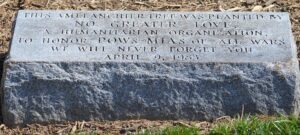 missing when he was forced into war as a result of the German government taking him in the middle of the night, but I never knew him personally. Nevertheless, I feel very sad for those people who have suffered such a loss as this. As of September 18, 2020, the American Battle Monuments Commission (ABMC) lists a total of 85,394 Americans MIA, including 4,422 from World War I, 71,692 from World War II, 7,717 from the Korean War, 1,561 from the Vietnam War. They don’t list any from other conflicts, whether there are missing ones or not.
missing when he was forced into war as a result of the German government taking him in the middle of the night, but I never knew him personally. Nevertheless, I feel very sad for those people who have suffered such a loss as this. As of September 18, 2020, the American Battle Monuments Commission (ABMC) lists a total of 85,394 Americans MIA, including 4,422 from World War I, 71,692 from World War II, 7,717 from the Korean War, 1,561 from the Vietnam War. They don’t list any from other conflicts, whether there are missing ones or not.
 Switzerland has long been a neutral nation when it comes to wars other conflicts. That hasn’t always been an easy status to accomplish. According to the Hague Convention of 1907, a neutral country means that the country has declared nonparticipation during a war and cannot be counted on to help fight a belligerent country. “Non-belligerent” countries are ones that offer non-combative support in times of war. Countries interpret neutrality differently. Switzerland has what would be called armed neutrality in global affairs. Switzerland is not alone in that status, since Ireland, Austria, and Costa Rica all take similar non-interventionist stances, but Switzerland remains the oldest and most respected.
Switzerland has long been a neutral nation when it comes to wars other conflicts. That hasn’t always been an easy status to accomplish. According to the Hague Convention of 1907, a neutral country means that the country has declared nonparticipation during a war and cannot be counted on to help fight a belligerent country. “Non-belligerent” countries are ones that offer non-combative support in times of war. Countries interpret neutrality differently. Switzerland has what would be called armed neutrality in global affairs. Switzerland is not alone in that status, since Ireland, Austria, and Costa Rica all take similar non-interventionist stances, but Switzerland remains the oldest and most respected.
The desired neutrality in Switzerland started back in 1515, when the Swiss Confederacy suffered a devastating loss to the French at the Battle of Marignano. Apparently, they really lost their taste for war following the defeat, because the Confederacy completely abandoned its expansionist policies and did everything in their power to avoid any future conflict in the interest of self-preservation. No one likes a war, but I don’t think that many nations detest it so much that they would go to such extremes. While the Battle of Marignano began the desire for neutrality, it was the Napoleonic Wars, that truly sealed Switzerland’s place as a neutral nation. Switzerland was invaded by France in 1798 and later made a satellite of Napoleon Bonaparte’s empire, forcing it to compromise its neutrality. With Napoleon’s defeat at Waterloo, the major European powers decided that a neutral Switzerland might actually be a good thing. Given the volatility of the area they decided that Switzerland would serve as a valuable buffer zone between France and Austria and contribute to stability in the region. I’m not sure how they figured that, considering the fact that they would not fight. Nevertheless, during 1815’s Congress of Vienna, they signed a declaration affirming Switzerland’s “perpetual neutrality” within the international community. Switzerland had what it wanted, as did the international community.
Attaining neutrality and keeping it can be two very different things. Nevertheless, Switzerland maintained its impartial stance through World War I, when it mobilized its army and accepted refugees, also still refusing to take sides militarily. The newly formed League of Nations officially recognized Swiss neutrality and established its headquarters in Geneva in 1920. World War II presented a more significant challenge to Swiss neutrality, when the country found itself encircled by the Axis powers. For a country that no longer had a desire to fight, this was a big problem. Switzerland was able, with threats of retaliation, to maintain its independence. Switzerland also continued to trade with Nazi Germany, a decision that later proved controversial after the war ended, and one they most likely regretted.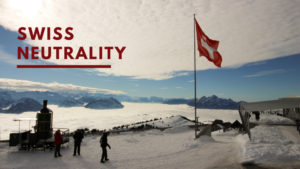
Switzerland has taken a more active role in international affairs by aiding with humanitarian initiatives since World War II, but it fiercely maintains its neutral status with regard to military affairs. Switzerland has never joined the North Atlantic Treaty Organization (NATO) or the European Union, and only joined the United Nations in 2002. Despite its longstanding neutrality, the country still maintains an army for defense purposes and requires part-time military service from all males between the ages of 18 and 34. It always best to be prepared…just in case.
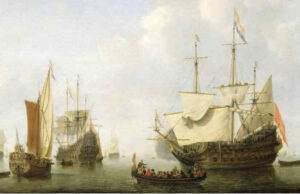
 Not many wars can be called…peaceful, but the Dutch-Scilly War is one that definitely can. Some wars start over borders, some over principles, and some over…well, who remembers. The Dutch-Scilly War lasted 335 years. That’s an amazingly long time in any war, and even more so when you consider that it had no battles or deaths. Oliver Cromwell had fought the Royalists to the edges of the Kingdom of England. Cromwell was an English general and statesman who, first as a subordinate and later as Commander-in-Chief, led armies of the Parliament of England against King Charles I during the English Civil War, subsequently ruling the British Isles as Lord Protector from 1653 until his death in 1658.
Not many wars can be called…peaceful, but the Dutch-Scilly War is one that definitely can. Some wars start over borders, some over principles, and some over…well, who remembers. The Dutch-Scilly War lasted 335 years. That’s an amazingly long time in any war, and even more so when you consider that it had no battles or deaths. Oliver Cromwell had fought the Royalists to the edges of the Kingdom of England. Cromwell was an English general and statesman who, first as a subordinate and later as Commander-in-Chief, led armies of the Parliament of England against King Charles I during the English Civil War, subsequently ruling the British Isles as Lord Protector from 1653 until his death in 1658.
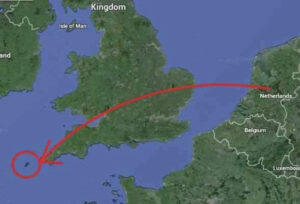
In the West of Britain, Cornwall was the last Royalist stronghold. In 1648, Cromwell pushed on until mainland Cornwall was in the hands of the Parliamentarians. The Royalist Navy was forced to retreat to the Isles of Scilly, which lay off the Cornish coast and were under the ownership of Royalist John Granville. Before fleeing Cornwall, the Royalists raided a few Dutch shipping vessels as an act of revenge, then escaped to the Isles of Scilly. With that, the war was on. The Dutch turned up in Scilly demanding reparations from the Royalists. The Royalists refused and the Dutch declared war. The whole point of the war was to get restitution for the damage done by the Royalists, but the Dutch quickly realized that the Royalists were “dead broke!!” They didn’t have a penny to their name. Well, as we all know, you can’t get blood from a turnip, so going to war to receive money that could never be paid would do no good. In the end, they decided to call it a day and go home. A smart move if you ask me. The problem with the whole 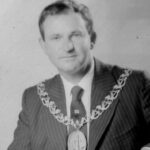
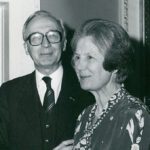 thing is that they never declared peace with the Isles. They just completely forgot they were at war.
thing is that they never declared peace with the Isles. They just completely forgot they were at war.
In 1986, Roy Duncan, historian and Chairman of the Isles of Scilly Council, decided to investigate. He wrote to the Dutch Embassy in London. Research proved that that no peace treaty had ever been signed, so Duncan invited the Dutch ambassador Jonkheer Rein Huydecoper to visit the islands and officially end the “conflict” at last. Peace was declared on April 17, 1986, exactly 335 years after the supposed declaration of war. The Dutch ambassador joked that it must have been horrifying to the Scillonians “to know we could have attacked at any moment.”
 So many of the men and women who return from combat, when many of their buddies didn’t, suffer from a multitude of feelings. Many feel like it should been them killed in the bombing, shooting, plane crash, or whatever it might have been that took their buddy or buddies, and somehow let them alive. No matter that they were quite possibly wounded too, maybe even lost a limb. The point was that somehow they had come back alive, and they carry the guilt of that with them always.
So many of the men and women who return from combat, when many of their buddies didn’t, suffer from a multitude of feelings. Many feel like it should been them killed in the bombing, shooting, plane crash, or whatever it might have been that took their buddy or buddies, and somehow let them alive. No matter that they were quite possibly wounded too, maybe even lost a limb. The point was that somehow they had come back alive, and they carry the guilt of that with them always.
Some of those returning heroes struggle with the loss of their feeling all their lives. Some of them take risks, feeling like they are living on borrowed time, and if their time comes, it will almost be a form of justice. Some feel 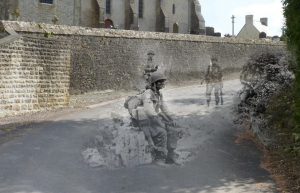 like it is borrowed time, but look at it more like living a gift. They might try to live up to what they think would make their buddies would be proud of. It doesn’t matter how they live their lives, for some, it will never be enough…in their minds anyway. They feel like their buddy died, and because of that, they can have a family…one their buddy never got to have. And if those buddies who were lost had a family, they feel an even greater burden, because not only did their buddy lose out of being with his family, but the family lost him too.
like it is borrowed time, but look at it more like living a gift. They might try to live up to what they think would make their buddies would be proud of. It doesn’t matter how they live their lives, for some, it will never be enough…in their minds anyway. They feel like their buddy died, and because of that, they can have a family…one their buddy never got to have. And if those buddies who were lost had a family, they feel an even greater burden, because not only did their buddy lose out of being with his family, but the family lost him too.
War is not an easy thing to go through, and those of us who are home, especially those of us with no one in the war, cannot really understand what  they go through either in the war, or after the war. It’s impossible. There are other kinds of survivors guilt, and I don’t suppose one is easier than the other, but it seems to me that because of the trust, companionship, and love these men feel for each other; and the idea that in the end, he couldn’t save the buddy or buddies who he felt were somehow his responsibility…well, it would be devastating. I can’t even begin to imagine. And the mind is a tough thing to get past, once it gets an idea firmly ingrained in it. For many soldiers, finally deciding that they aren’t living on borrowed time is a lifelong process, and all their family can do is pray they can make the transition back to living life again. I pray they can too.
they go through either in the war, or after the war. It’s impossible. There are other kinds of survivors guilt, and I don’t suppose one is easier than the other, but it seems to me that because of the trust, companionship, and love these men feel for each other; and the idea that in the end, he couldn’t save the buddy or buddies who he felt were somehow his responsibility…well, it would be devastating. I can’t even begin to imagine. And the mind is a tough thing to get past, once it gets an idea firmly ingrained in it. For many soldiers, finally deciding that they aren’t living on borrowed time is a lifelong process, and all their family can do is pray they can make the transition back to living life again. I pray they can too.
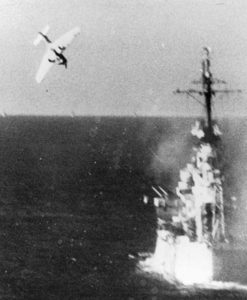 It is a strange idea to give a pilot minimal training and then send them out to do a mission, but it depends, I suppose on the mission they are sent out to do. With Japan losing the war and most of the well trained pilots gone, as a result of major battle losses, a new breed of pilots was born. These new pilots were called Kamikaze or Suicide Bombers. They required only minimal training, because most would not return from their missions. It was part of a strange plan that required the pilot to deliberately give up their life for the mission. Of course, every soldier knows that the next mission could end badly, and that losing their life is never out of the question, but the idea of heading out with the specific plan of crashing your plane into a ship is very foreign to me.
It is a strange idea to give a pilot minimal training and then send them out to do a mission, but it depends, I suppose on the mission they are sent out to do. With Japan losing the war and most of the well trained pilots gone, as a result of major battle losses, a new breed of pilots was born. These new pilots were called Kamikaze or Suicide Bombers. They required only minimal training, because most would not return from their missions. It was part of a strange plan that required the pilot to deliberately give up their life for the mission. Of course, every soldier knows that the next mission could end badly, and that losing their life is never out of the question, but the idea of heading out with the specific plan of crashing your plane into a ship is very foreign to me.
From a training aspect, I suppose the Japanese felt it was a good tradeoff. The 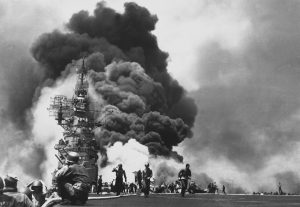 Kamikaze pilots needed little training and could do great damage taking planes full of explosives and crash them into ships. Still, it seems to me that the cost of the training, and the loss of the planes on every mission…not to mention the loss of pilots, would completely defeat the purpose of the pilot training. Nevertheless, Kamikaze pilots have been around a while, and some nations see suicide missions as honorable somehow. Everyone knows that in a war, people are going to die, from both sides, but to specifically plan to take your own life for the mission, seems crazy to me, and to most sane people.
Kamikaze pilots needed little training and could do great damage taking planes full of explosives and crash them into ships. Still, it seems to me that the cost of the training, and the loss of the planes on every mission…not to mention the loss of pilots, would completely defeat the purpose of the pilot training. Nevertheless, Kamikaze pilots have been around a while, and some nations see suicide missions as honorable somehow. Everyone knows that in a war, people are going to die, from both sides, but to specifically plan to take your own life for the mission, seems crazy to me, and to most sane people.

For the Japanese, the Kamikaze mission brought a temporary measure of success, I suppose. At Okinawa, they sank 30 ships and killed almost 5,000 Americans. In that process, 30 pilots, who paid for the victory with their lives, were also lost in the mission. And in the end, the Kamikaze missions made no real difference in the war’s outcome. They still lost the war, and to me, that does not make the Kamikaze missions worthwhile. I don’t think it ever pays to take so little consideration for the lives of the people who serve under you. I believe that is the biggest mistake made by these horrific regimes. Such a murderous nation cannot long succeed, because people will eventually put a stop to it. The only sad part is that sometimes it takes so long to put a stop to these horrific acts. Kamikaze pilots, suicide bombers, and any other soldier who’s mission requires his own death, all fall into the category of a price too high to pay.
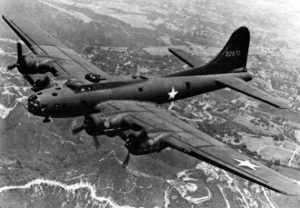 Strange things have been known to happen over the centuries of Earth’s existence. Most end up being clearly explained. Some are explained, but few people believe the explanation, and still others are forever mysteries…destined to have no possible explanation. People, especially those who witness the event, just know that it did happen. Often, wars are filled with strange stories. Everything from bombs killing everyone in an area, except for one lone old woman; to enemy soldiers allowing a soldier to go free, even though the enemy clearly had the upper hand. Of course, some mysteries defy any possible explanation. Such is the case of the Phantom Fortress. If one looks there can be found all manner of oddities and anomalies scattered in the background of the more sensational news of the fighting of a war, coming from land, air, and sea. From ghost ships found floating in the oceans years after they were last seen, their crews mysteriously missing, with no sign of violence or death on board. Of course, the stories run wild, sighting every possibility from UFOs; to disappearance to another dimension; to desertion, though hard to explain, when no trace of the crew ever showed up anywhere else. Still, few were more strange than the Phantom Fortress.
Strange things have been known to happen over the centuries of Earth’s existence. Most end up being clearly explained. Some are explained, but few people believe the explanation, and still others are forever mysteries…destined to have no possible explanation. People, especially those who witness the event, just know that it did happen. Often, wars are filled with strange stories. Everything from bombs killing everyone in an area, except for one lone old woman; to enemy soldiers allowing a soldier to go free, even though the enemy clearly had the upper hand. Of course, some mysteries defy any possible explanation. Such is the case of the Phantom Fortress. If one looks there can be found all manner of oddities and anomalies scattered in the background of the more sensational news of the fighting of a war, coming from land, air, and sea. From ghost ships found floating in the oceans years after they were last seen, their crews mysteriously missing, with no sign of violence or death on board. Of course, the stories run wild, sighting every possibility from UFOs; to disappearance to another dimension; to desertion, though hard to explain, when no trace of the crew ever showed up anywhere else. Still, few were more strange than the Phantom Fortress.
On November 23, 1944, a British Royal Air Force anti-aircraft unit stationed near Cortonburg, Belgium was suddenly surprised to see an American Army Air Corps B-17 bomber, nicknamed the “Flying Fortress,” heading in their direction. Because there was no such landing scheduled and because of the speed of the incoming aircraft it was assumed that it was preparing to make an emergency landing at the base. Still, after checking with the base tower, it was confirmed that that no such B-17 landing was expected. Be that as it may, this plane was coming in for a landing, so the gunner crew watched helplessly as the massive aircraft came hurtling in towards a nearby open, plowed field.
No matter what standards you use, this landing was a messy one to say the least. The plane bounced and swerved along as the terrified gunners looked on. It finally came to a stop dangerously close to their position after one of its wings clipped the ground. Nevertheless, it was still in one piece and had not actually crashed, but it was an incredibly rough landing. The stunned gunners watched as the aircraft sat there looming over the field, its propellers continuing to spin. The minutes ticked by, but no one exited the plane. After waiting 20 minutes with no sign of human activity, and the plane just sitting there with its engines running, the gunner crew decided to go in and investigate. They had no idea what kind of a scene awaited them inside, but what they found, they never could have guessed. Upon opening the entry hatch under the fuselage, they entered. The gunner crew expected that the crew had been injured or was otherwise unable to get out of the plane, but what they found was that the plane was completely empty. Unable to believe what they had just witnessed, especially in light of the empty plane, the gunner crew made a full sweep through the aircraft. The gunner crew reported that it looked like the crew had just recently been there and must have left the aircraft in a hurry. They found chocolate bars unwrapped and half eaten lying about, a row of neatly folded parachutes, with none apparently missing, and jackets that had been neatly hung up.
The superior officer, a John V. Crisp, would say of the eerie scene, “We now made a thorough search and our most remarkable find in the fuselage was about a dozen parachutes neatly wrapped and ready for clipping on. This made the whereabouts of the crew even more mysterious. The Sperry bomb-sight remained in the Perspex nose, quite undamaged, with its cover neatly folded beside it. Back on the navigator’s desk was the code book giving the colours and letters of the day for identification purposes. Various fur-lined flying jackets lay in the fuselage together with a few bars of chocolate, partly consumed in some cases.” Crisp found himself in an awkward position. He knew what he was seeing. He knew that he would have to write up the report on the incident. And most importantly, he knew that his men were looking to him for answers. Where had the crew of the “Phantom Fortress” gone and how had the plane landed on its own? This was not during a time when planes could be programed to land. No one had any idea how this could have come to pass. Crisp told the men to shut the engines down, and they inspected the planes interior further. The men looked for anything that might provide answers. The log book was found opened, and the last cryptic words written in it were “bad flak.” Yet, all of the parachutes seemed to be accounted for and the exterior of the plane did not have evidence of flak damage, or any damage except for what it had incurred in its rough landing, such as the buckled wing and one disabled engine. The log entry just seemed strange considering.
The B-17’s crew was eventually found, alive and well. For their side, they said, “They changed their course towards Brussels, Belgium, at the same time making the plane lighter by dumping and jettisoning any unnecessary or nonessential equipment on board. When the plane still continued to suffer and a second engine on the struggling plane sputtered out, it was decided that the aircraft would be unable to make the journey, and the crew had then decided to bail out. The B-17 was put on autopilot and left to its fate as the crew jumped to safety. No one thought it would make it very far, let alone somehow land, but land it did.” It seemed as if they honestly thought they had been in battle, and even more, that they had bailed out, with parachutes that were miraculously replaced. Still, why did ground crew report all 4 engines working as the bomber had approached, with one being damaged only upon landing, when the report said that 2 engines had been knocked out during the mission? Where was the damage from the claimed enemy fire? Perhaps most mysterious of all, how had a large, cumbersome plane like the B-17 manage to come to a landing without a pilot?
Authorities on the case, as well as crew members of the Phantom Fortress, suggested some theories to explain the mysteries surrounding the event. For instance, with the engines it could have been that the technical difficulties cleared up on their own after the crew had bailed out, making the plane seem to have 4 fully operating engines on approach, although why they would start working again after being taken out remains mysterious. If the engines had been in bad enough shape for the crew to abandon the aircraft it seems odd that they should kick back into working order on their own and continue whirring away even after the rough landing. As to the lack of any apparent visible damage from enemy fire, the gunner crew could have simply missed the damage due to the untrained eyes of the team that initially investigated the plane after it had landed. They were just a gunner crew, not trained aviators, and may have mistaken the damage reported by the B-17 crew as being from the crash. They might not have noticed that the aircraft had sustained battle damage, but then again they were anti-aircraft gunners and might have had some idea. With the parachutes, it was surmised that they had possibly mistaken some spare parachutes as the full compliment. However, this is all speculation, and the mystery has never been totally solved. Still, the biggest mystery simply cannot be explained away. How did the B-17 come to a landing mostly intact without a pilot? Autopilot is one thing, but landing is another beast altogether. As the saying goes, “Flying is easy, landing is hard.” A pilotless B-17 landing by itself with no one on board was unprecedented. It should have careened into the ground to crash into a ball of fire and debris, or at least ended up a heap of twisted wreckage. So how could this happen?
Although no one really knows for sure, the main theory is “that the plane simply lost altitude slowly, at just the right speed, and with just the right angle of descent to come down relatively softly enough to appear as if it was landing, with the B-17’s legendary toughness and sturdy frame managing to hold it together to keep it from disintegrating.” To this, I say, “Come on!! Get serious!!” The odds of all of this happening in just such a way is all but impossible. Also, there is the rather odd detail that this unmanned plane just happened to come 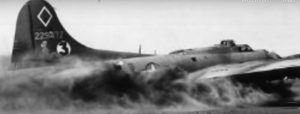 down in the exact best place to land under the circumstances, in that wide open field, and not one of the countless other places it could have come down more tragically. Its just too odd. Nevertheless, the mystery landing of the “Phantom Fortress” did happen. The details of how it did remain mysterious and open to speculation. What we do know for sure is that this B-17 was on a bombing mission in Germany, that it did land without a crew in that field, and that the crew members were later found to have been alive and well with quite a story to tell.
down in the exact best place to land under the circumstances, in that wide open field, and not one of the countless other places it could have come down more tragically. Its just too odd. Nevertheless, the mystery landing of the “Phantom Fortress” did happen. The details of how it did remain mysterious and open to speculation. What we do know for sure is that this B-17 was on a bombing mission in Germany, that it did land without a crew in that field, and that the crew members were later found to have been alive and well with quite a story to tell.
 Unfortunately, we don’t live in a world without wars, so our soldiers are a vital part of our national security. Of course, we hope and pray that all of our soldiers will eventually come home from war, be discharged from military service, and become veterans. Sadly that is not always the case. For those who do not come home, we have Memorial Day, to honor their memory. Veteran’s Day, however, is a day to honor those who served, and then came home and went back to their lives. For those who are veterans, we take this opportunity to thank them for their service and their sacrifice, because they did sacrifice. They left their families at home, and went out to fight for people they don’t even know, and probably never will. We, here at home, have no way to really repay them for their acts of selflessness, so all we can do is thank them for their service. Somehow, it just doesn’t seem enough. How could we possibly repay them? We can never give them back the lost time with family, the memories, the births of children, and the multiple firsts that go with them. Those things are gone forever for the soldier, because they chose to go out and protect their country, and the people in it.
Unfortunately, we don’t live in a world without wars, so our soldiers are a vital part of our national security. Of course, we hope and pray that all of our soldiers will eventually come home from war, be discharged from military service, and become veterans. Sadly that is not always the case. For those who do not come home, we have Memorial Day, to honor their memory. Veteran’s Day, however, is a day to honor those who served, and then came home and went back to their lives. For those who are veterans, we take this opportunity to thank them for their service and their sacrifice, because they did sacrifice. They left their families at home, and went out to fight for people they don’t even know, and probably never will. We, here at home, have no way to really repay them for their acts of selflessness, so all we can do is thank them for their service. Somehow, it just doesn’t seem enough. How could we possibly repay them? We can never give them back the lost time with family, the memories, the births of children, and the multiple firsts that go with them. Those things are gone forever for the soldier, because they chose to go out and protect their country, and the people in it.
Our soldiers are an amazing group of people…the best in the world. They have blessed the people of this nation in so many ways. Their service goes beyond just fighting a war. They show kindness to the people in war ravaged countries, sometimes risking their own lives to do so. The biggest problems with civilians in war zones,  is that you never truly know if the people you meet need help, or if they are out to kill you. Nevertheless, our soldiers set aside the worries and fears, and go out to do their duty. That is what makes us proud. We wish it was unnecessary for them to go, but we are thankful when they do, because we know that we are safer.
is that you never truly know if the people you meet need help, or if they are out to kill you. Nevertheless, our soldiers set aside the worries and fears, and go out to do their duty. That is what makes us proud. We wish it was unnecessary for them to go, but we are thankful when they do, because we know that we are safer.
I wish all our soldiers could come home and that peace on earth could become a reality, but that is not to be. Nevertheless, to all our veterans, I thank you for your time in the service. We would not be where we ar today without you. Happy Veterans Day to all of you, from a grateful nation!!

